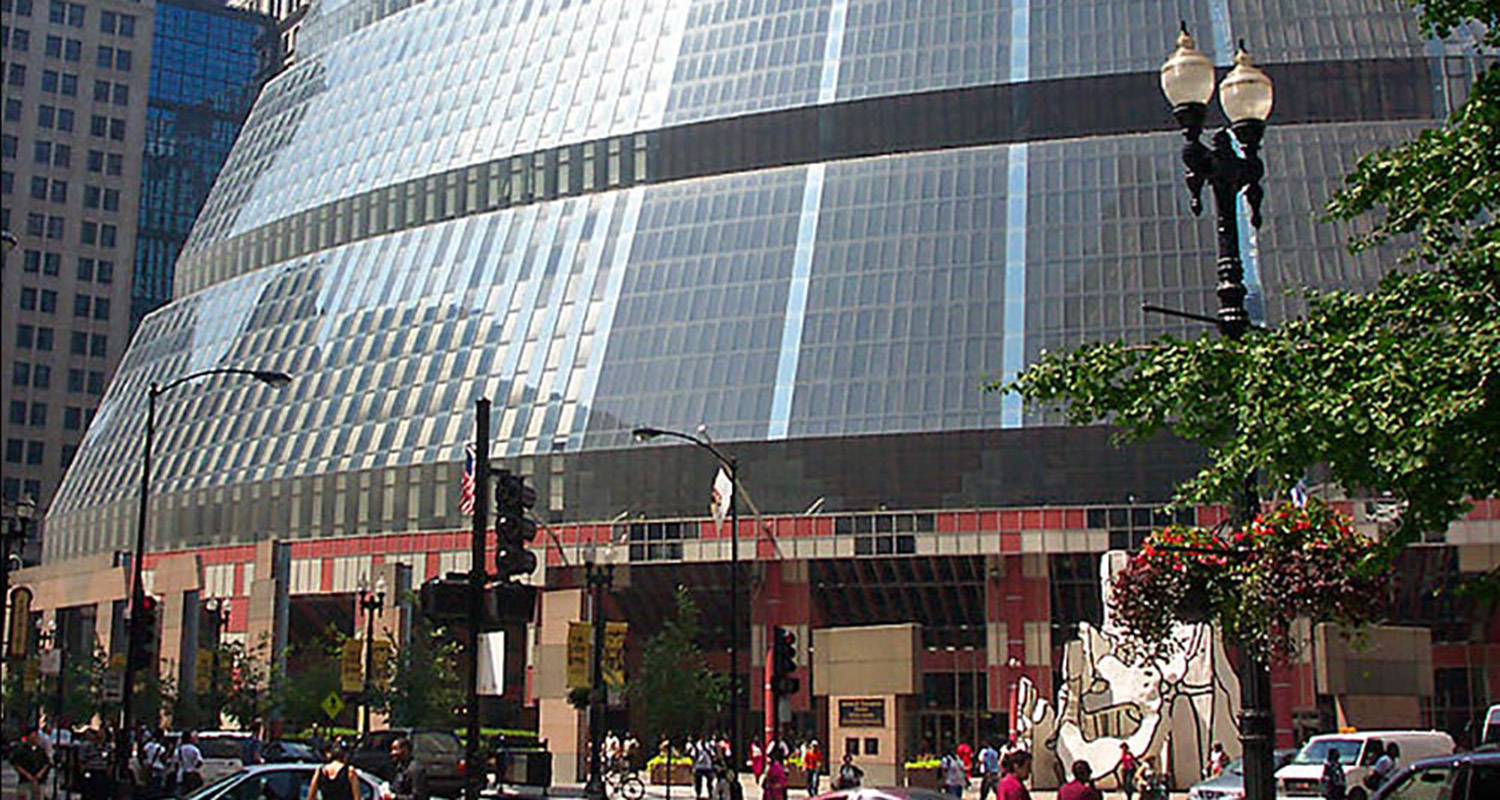Chicago (October 2015)
As Chicago hosted the inaugural Chicago Architecture Biennial, news and opinions about the future demolition of buildings by some of Chicago’s greatest architects – Gene Summers and Helmut Jahn – was announced and opined. Gene Summers’ Malcolm X College, designed in 1971, is planned for replacement as the City has issued an RFP for its demolition. Architectural historian and preservation advocate Vince Michael writes in his blog that it is one of Summers’ great Miesian works and considered, with his Lakeside Center at McCormick Place of the same year, a “Modernist masterpiece.” The day after Michael was interviewed about the loss of Malcolm X by urban writer and former Chicago Sun-Times architecture critic Lee Bey, Chicago Tribune architecture critic Blair Kamin suggested “Tear down lakefront McCormick Place.” While acknowledging the building to be “a powerful work of steel-and-glass modernism,” he declared it be “one of Chicago’s worst urban design mistakes,” due to its location on the Lake Michigan waterfront.
“We’re too quick to eschew incredible, but currently “dated” designs; with a chance to survive, our cultural tastes catch up.”
LI president Bonnie McDonald and Docomomo US founder Gunny Harboe, OP ED Chicago Tribune, October 21, 2015
The same day as Kamin’s piece in the Chicago Tribune sending Lakeside Center to the scrap heap, Governor Bruce Rauner announced his intention to have the State of Illinois building – known as the James R. Thompson Center – completed in 1985 – put up for sale and declared the best scenario for the Helmut Jahn-designed building to be demolition. Considered to be one of Chicago’s best examples of Post-Modernism, like Bertrand Goldberg’s demolished 1975 Prentice Hospital, it’s a building that one either loves or loathes. Public opinion tends to side more with loathing the 17-story, cylindrical-shaped, blue and salmon paneled building containing an eye-popping open atrium. Like Prentice, Thompson Center, due to years of neglect and insensitive repairs and changes, looks worn and ugly to most. And for those who have worked there, memories of cramped offices, roaches and torn carpeting obscures any sense of progressive design.
In regards to Thomson Center, Kamin declared “Spare Jahn’s Thompson Center from Rauner’s death sentence!” While acknowledging some of its less desirable design features, such as “tawdry glass walls (robin’s egg blue and salmon — ugh!),” Kamin rightly points out that there could be a reuse option. Ironically, the Governor’s announcement came less than two weeks after a Biennial panel discussion, sponsored by Metropolis Magazine, focused on Postmodern architecture as a new frontier for the field of historic preservation, even featuring the Thompson Center on the webpage promoting the event. Landmarks Illinois’ president Bonnie McDonald participated on the panel, and reminded the audience that we shouldn’t treat great civic spaces as disposable and that reuse should be prioritized. McDonald and Lee Bey further discussed the issue of preserving Chicago’s Modern and Post-Modern heritage on Bey’s recent Architecture 360 podcast, which can be heard here. In the meantime, Metropolis sent its writers out to identify what it believes to be some of Chicago’s best Post-Modern works. And with preservation architect and DOCOMOMO_US founder Gunny Harboe, McDonald co-authored an opinion piece to the Chicago Tribune. As stated by McDonald and Harboe, “We’re too quick to eschew incredible, but currently “dated” designs; with a chance to survive, our cultural tastes catch up.” (Post: October 21, 2015)
Photo: “James R. Thompson Center” by Primeromundo. Licensed under Public Domain via Commons

